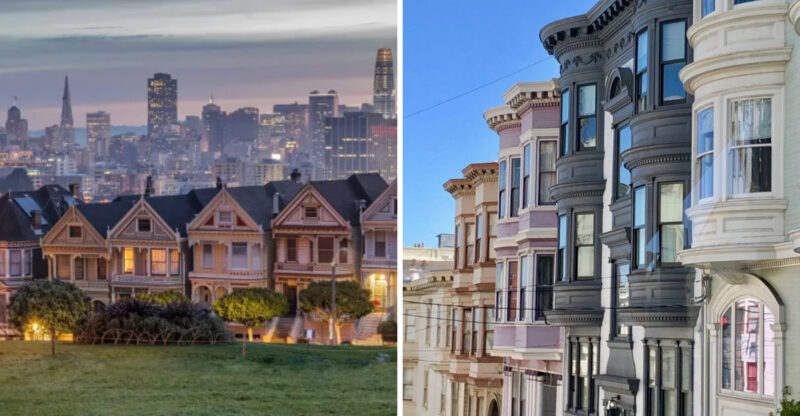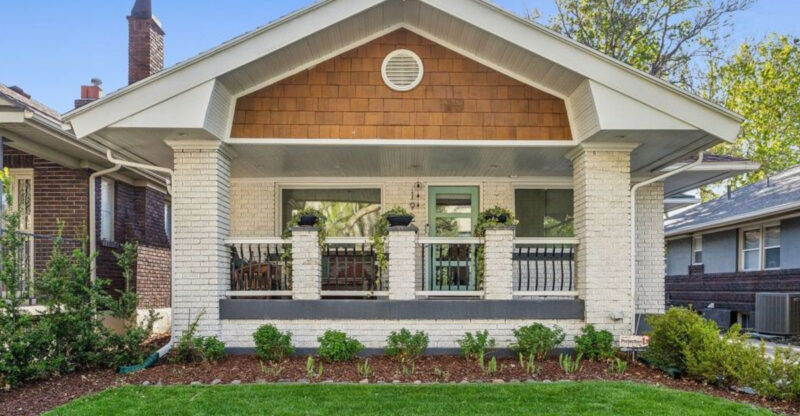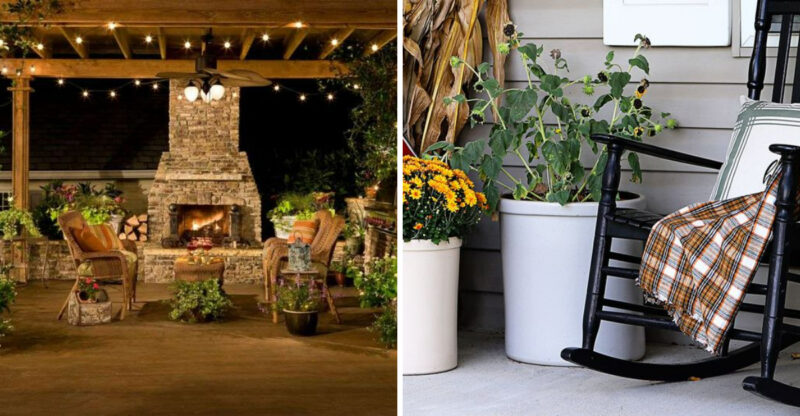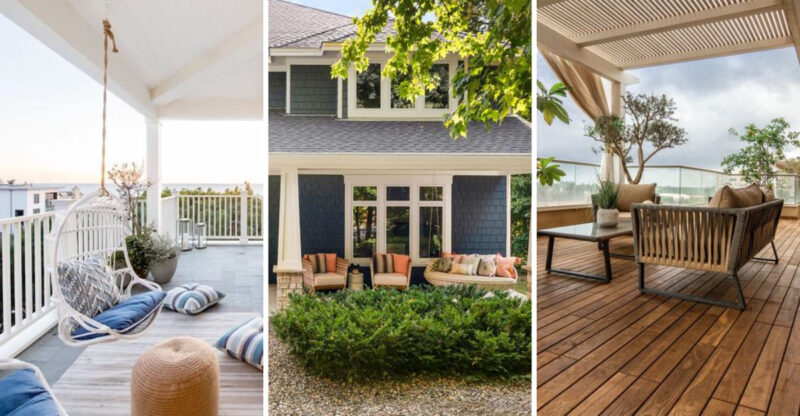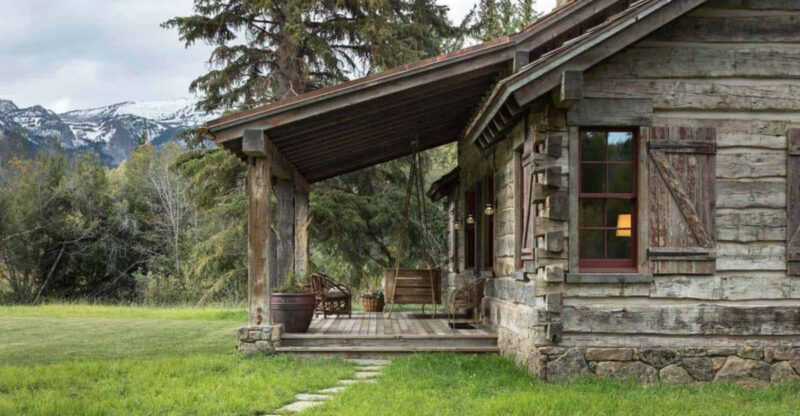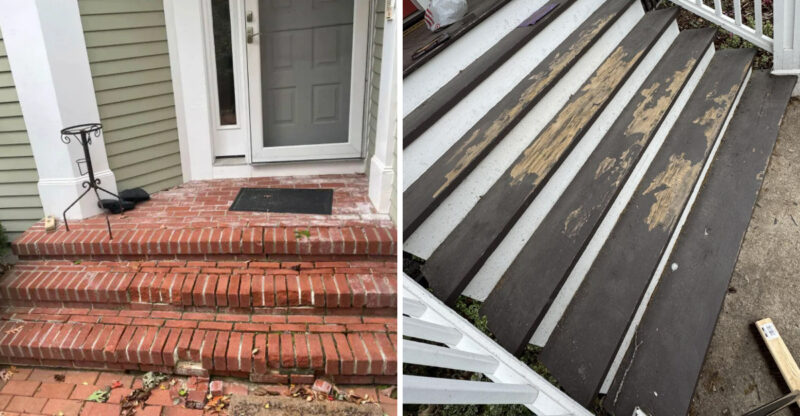21 Innovative Walkway Designs That Will Spice Up Your Backyard
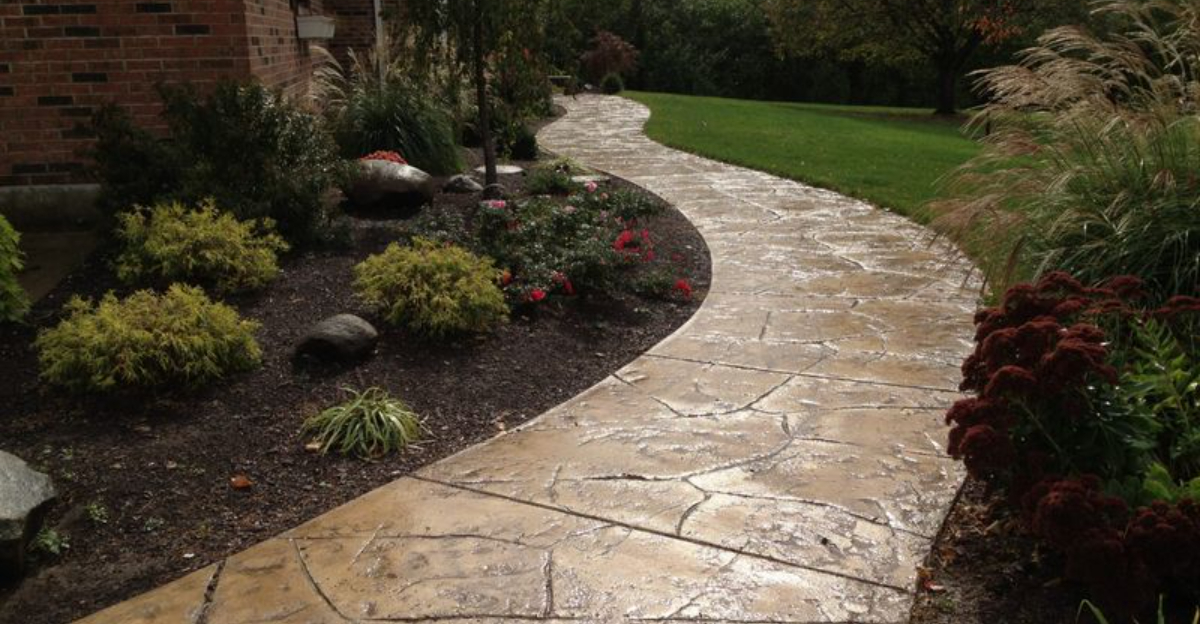
Walkways aren’t just paths from one spot to another they’re a chance to add style and personality to your yard.
A well-designed walkway guides visitors through your outdoor space while making a statement about your taste.
Whether you’re looking for something modern, rustic, or completely unique, these innovative walkway ideas will transform your backyard from ordinary to extraordinary.
1. Stepping Stone Mosaic
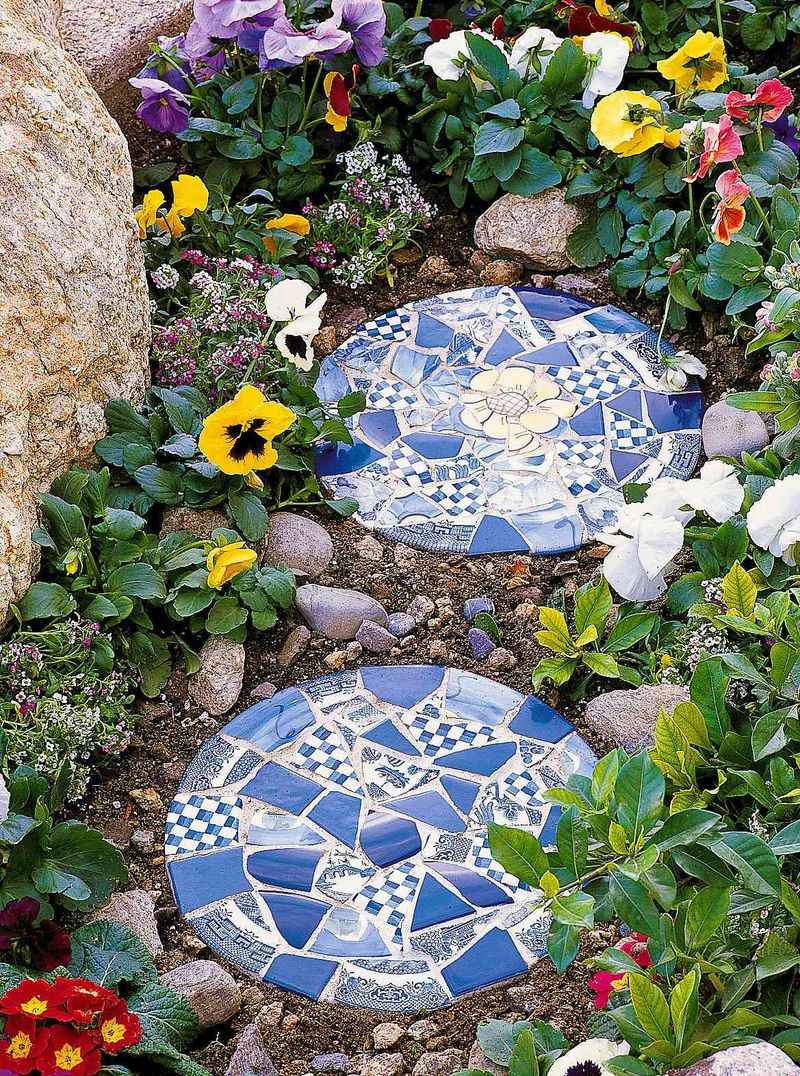
Mosaic stepping stones bring artistic flair to any garden path. Using colorful tile pieces, broken dishes, or glass gems, you can create personalized designs that reflect your style and interests.
Each stone becomes a mini masterpiece that visitors discover as they walk through your yard. Kids especially love helping design these magical stones, making this a perfect family project.
For a cohesive look, choose a color theme that complements your garden flowers or home exterior. The irregular shapes between stones allow groundcover plants to grow, creating a lush, established feel that improves with age.
2. Gravel and Timber Mix
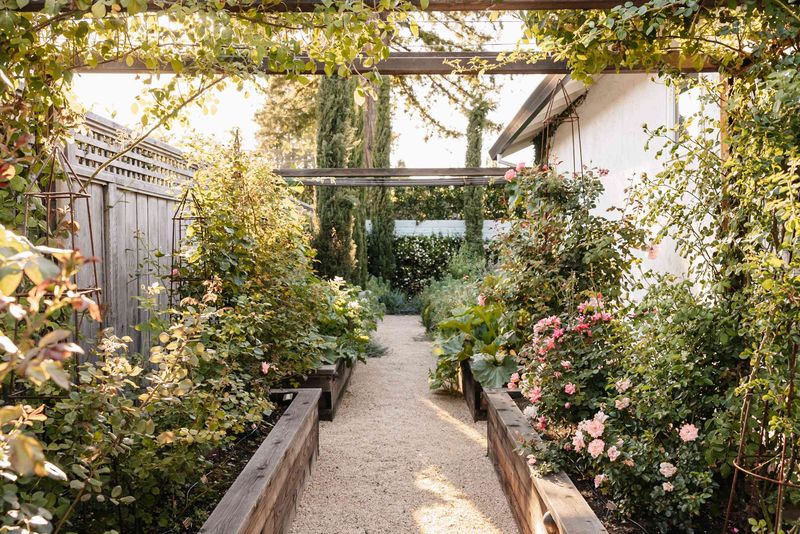
Rustic charm meets practical design with this budget-friendly walkway option. Wooden railroad ties or timber frames filled with fine gravel create a path that naturally drains water and prevents mud puddles after rain.
The contrast between warm wood and cool stone creates visual interest while defining the walking area clearly. This design works particularly well for casual, country-style gardens or properties with a natural aesthetic.
Installation requires minimal specialized tools, making it perfect for weekend warriors. The gravel can be easily refreshed every few years, and the timber provides stable edges that keep everything neatly contained.
3. Herringbone Brick Path
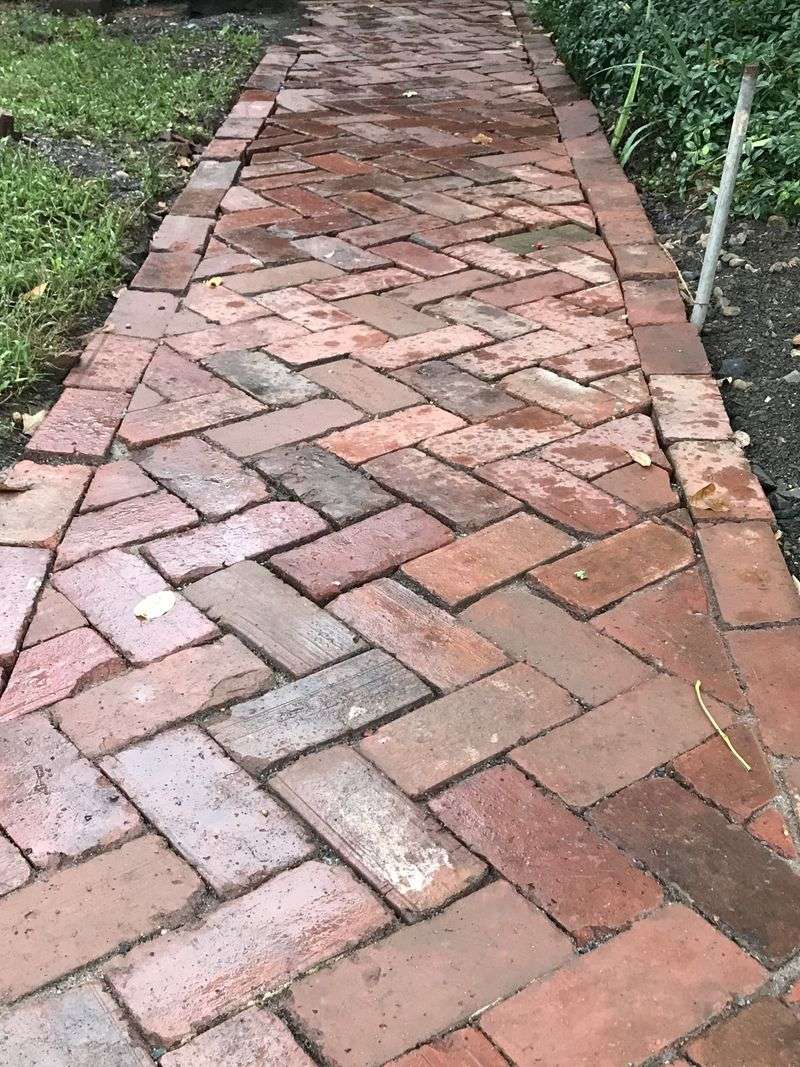
Classic red bricks arranged in a herringbone pattern create a timeless walkway that adds instant character. This traditional design has stood the test of time for good reason it’s both beautiful and incredibly durable.
The diagonal arrangement provides excellent structural stability, preventing bricks from shifting over time. Colors range from traditional reds to subtle tans, allowing you to complement your home’s exterior perfectly.
Though installation requires patience and precision, the results will last for decades with minimal maintenance. Adding a subtle curve to your herringbone path softens the geometric pattern and creates a more inviting journey through your garden space.
4. Flagstone with Groundcover
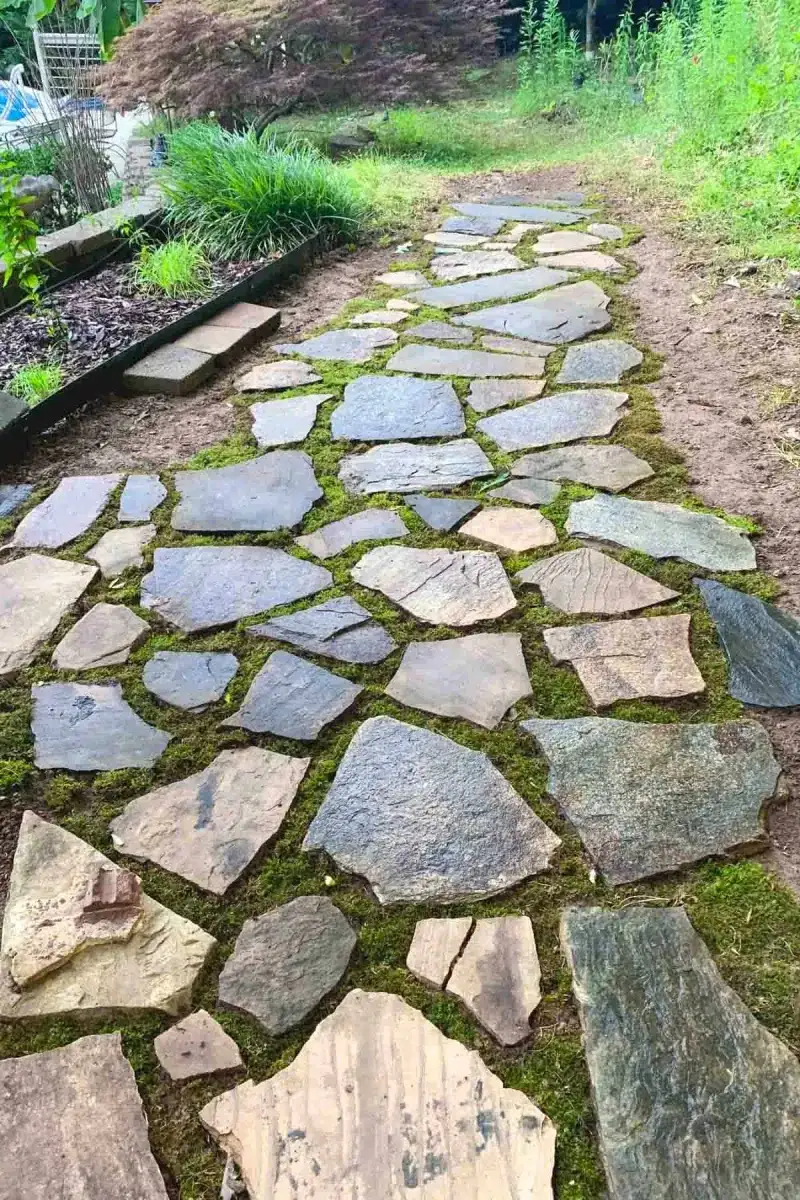
Natural flagstones create a walkway that seems to have always been part of the landscape. Placing these irregular stone pieces with small gaps between them allows for low-growing plants like thyme, moss, or creeping Jenny to fill the spaces.
When these plants bloom, your path transforms into a living carpet of color and texture. The combination of hard stone and soft greenery creates a perfect balance that appeals to both nature lovers and design enthusiasts.
Flagstone works with nearly any garden style, from cottage gardens to modern landscapes. The key is choosing stones with consistent thickness for a level walking surface while embracing their natural variation in shape and color.
5. Crushed Granite Trail
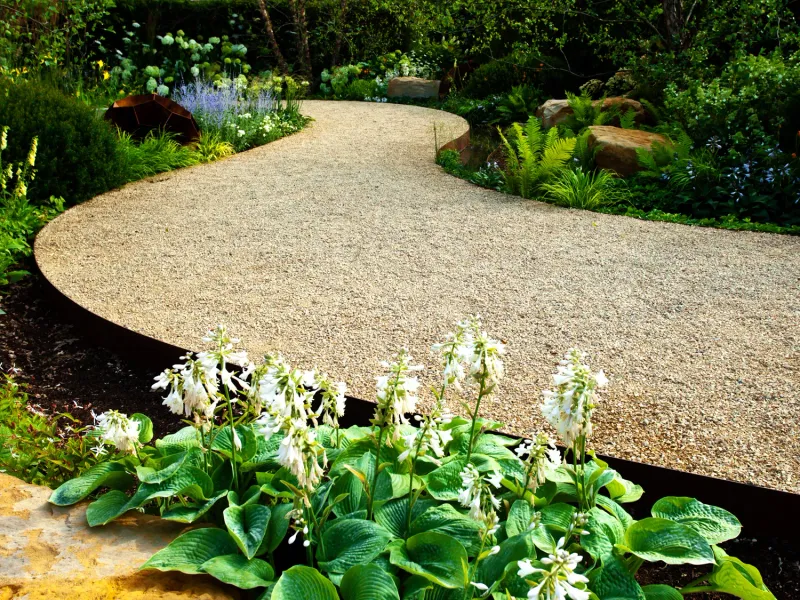
Crushed granite creates a path with both visual and auditory appeal that satisfying crunch underfoot signals visitors’ arrival. Available in several earthy tones from warm gold to cool gray, this material compacts firmly while still allowing excellent drainage.
Unlike traditional gravel, crushed granite forms a more stable surface that’s comfortable for walking. Metal, stone, or brick edging keeps the material contained and defines the path clearly.
This affordable option works beautifully in Mediterranean gardens, desert landscapes, or any design that emphasizes natural materials. A crushed granite path feels at once casual and intentional, guiding movement through your outdoor space without overwhelming the plants and features around it.
6. Recycled Wood Plank Walk
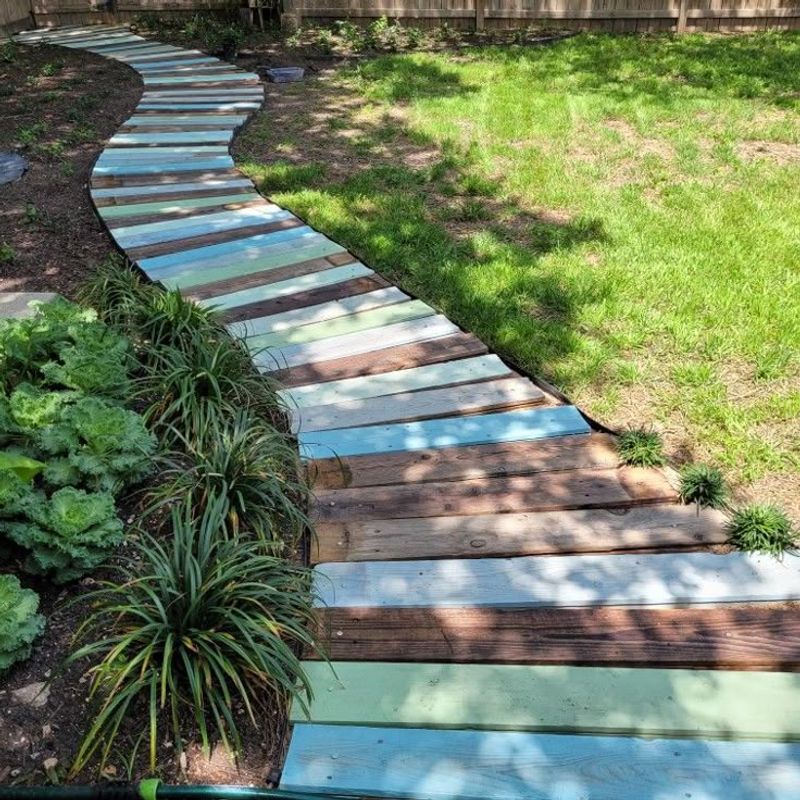
Salvaged wood planks bring warmth and eco-friendly charm to garden pathways. Old barn wood, reclaimed decking, or even wooden pallets can be transformed into a stunning walkway that tells a story through its weathered texture.
The natural variation in color and grain makes each path unique. Treating the wood with a weather-resistant sealer extends its life while preserving its character.
This design pairs beautifully with cottage gardens, rustic landscapes, or beach-themed yards. Laying the planks slightly above ground level prevents rotting and creates a boardwalk feel that’s especially practical in areas that tend to get muddy during rainy seasons.
7. Pebble-Inlaid Concrete
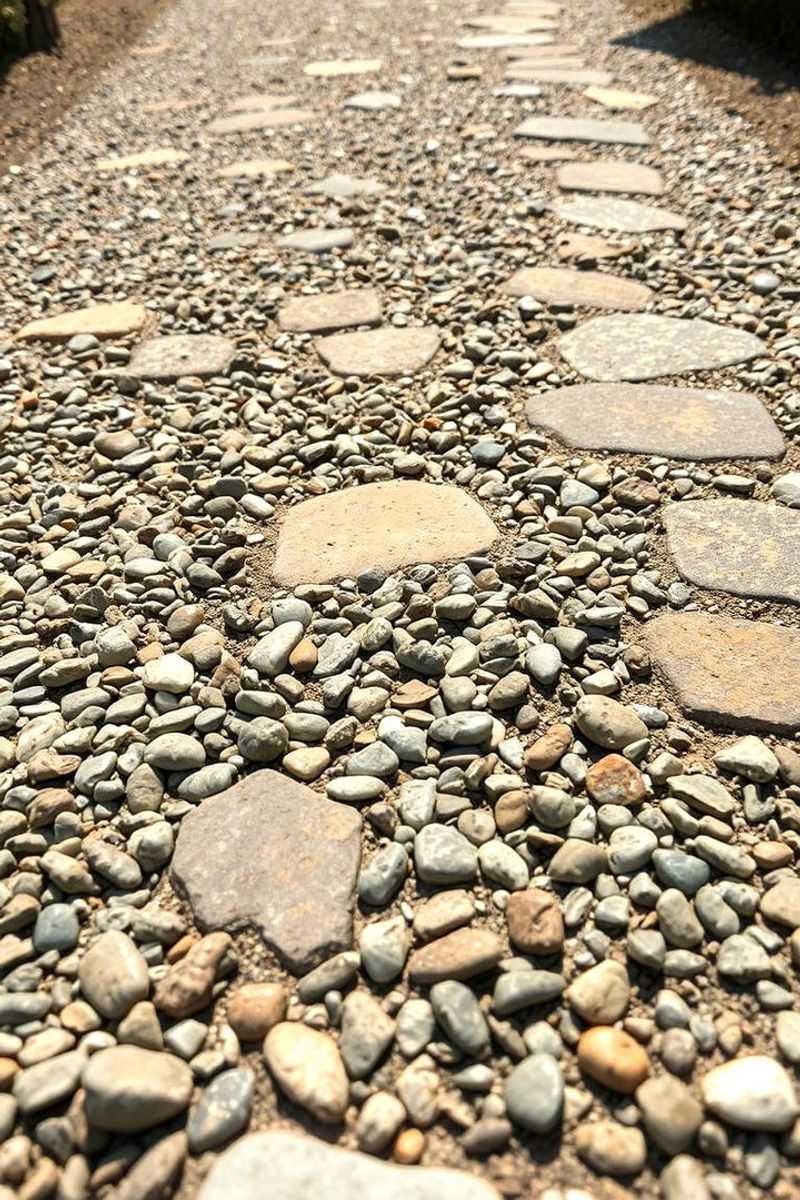
Smooth river pebbles pressed into wet concrete create a walkway that’s both artistic and practical. The exposed aggregate technique reveals colorful stones in patterns or random arrangements that add visual interest to an otherwise plain concrete path.
Walking on this textured surface provides a subtle foot massage a delightful sensory experience. Choose pebbles in colors that complement your landscape or create designs like waves, spirals, or geometric patterns for personalized flair.
This durable surface requires minimal maintenance while standing up to harsh weather conditions. The concrete base provides stability and weed prevention, while the pebbles add grip and drainage, making this an excellent choice for frequently used garden paths.
8. Curved Concrete Slabs
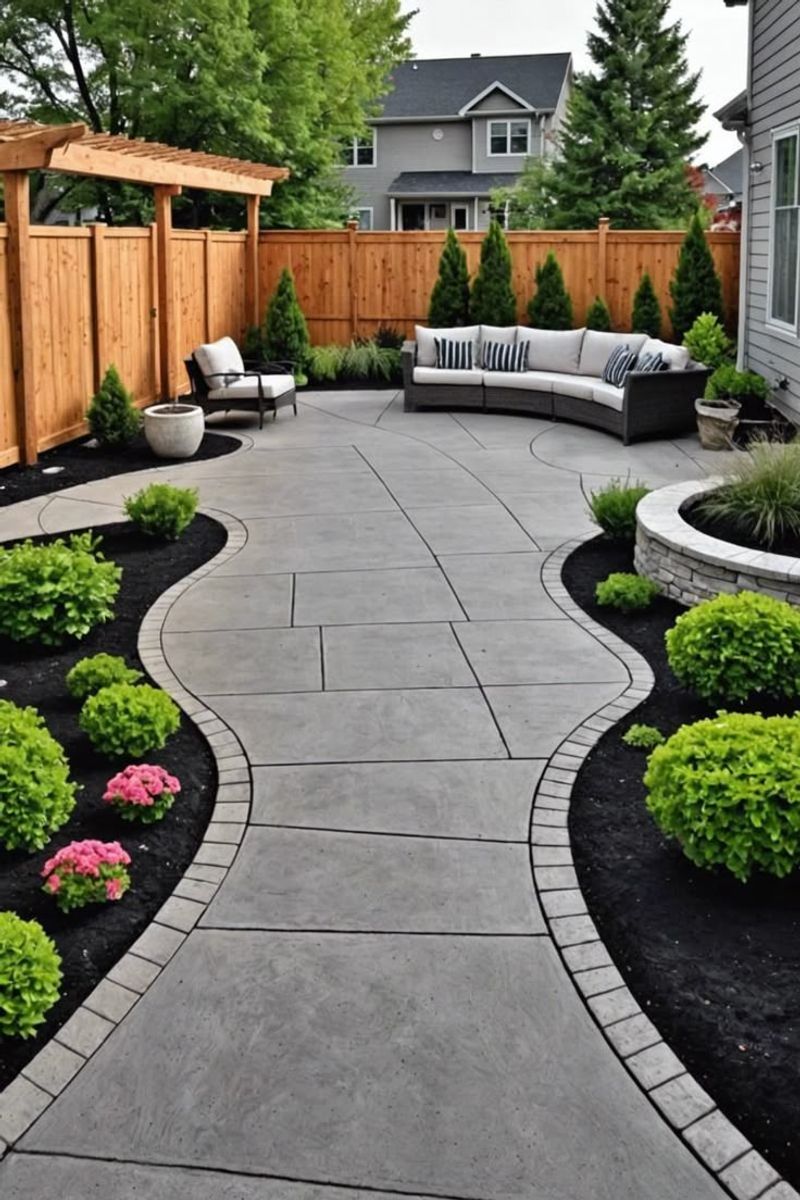
Modern yards benefit from the clean lines of large concrete slabs arranged in a graceful curve. Unlike traditional straight paths, curved walkways create visual interest and guide visitors naturally through the landscape.
The spaces between slabs can be filled with gravel, grass, or groundcover for contrast. Concrete can be colored or stained to complement your home’s exterior, moving beyond the expected gray to warm terracotta, subtle blue, or rich charcoal.
While this design appears simple, the precision required for proper installation makes it best for experienced DIYers or professionals. The result is a sophisticated walkway that balances contemporary style with organic flow, perfect for modern architectural landscapes.
9. Glow-in-the-Dark Pavers
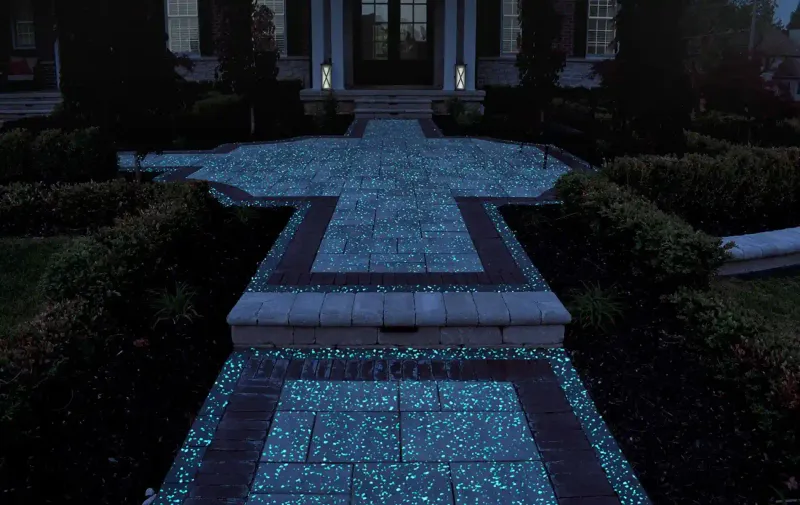
Magical evenings await with luminescent pavers that absorb sunlight during the day and release a gentle glow at night. These innovative materials eliminate the need for electric lighting while creating a whimsical, starlit path through your garden.
The soft blue-green glow is bright enough to guide footsteps without creating light pollution or disturbing wildlife. Available in various shapes and sizes, these pavers can form traditional pathways or be arranged in creative patterns.
Perfect for families with children or entertainers who use their yards after sunset, this unique walkway solution combines practicality with enchantment. The phosphorescent material lasts for years without losing its glow power, making it a worthwhile investment for nighttime garden enjoyment.
10. Turf Between Pavers
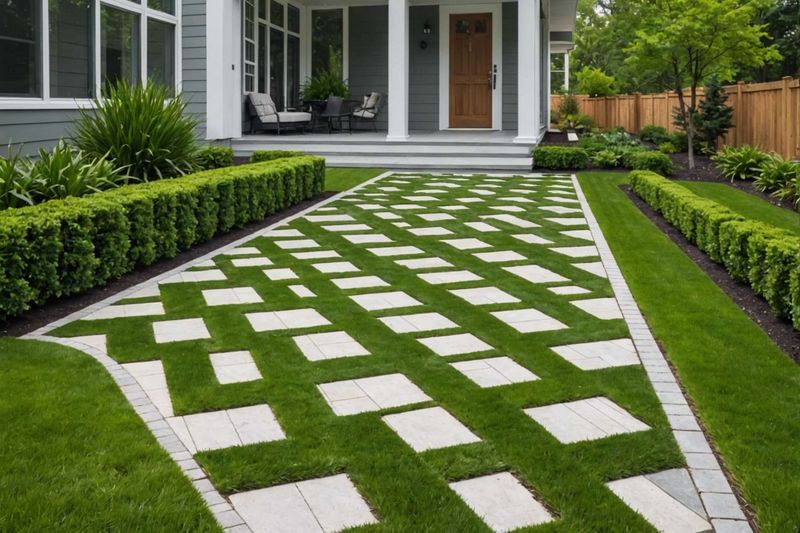
Square concrete pavers arranged with precisely manicured grass growing between them create a checkerboard effect that’s both playful and sophisticated. This design blends the hardscape elements of a traditional path with the softness of a lawn.
During hot summer months, this walkway stays cooler than solid concrete or stone paths. The grass sections allow for water absorption, reducing runoff and helping with yard drainage.
If traditional turf seems too maintenance-heavy, consider drought-tolerant alternatives like dwarf mondo grass or creeping thyme that require less mowing. This style works particularly well for wider garden paths or patio areas where the pattern can be fully appreciated from above.
11. River Rock Border Path
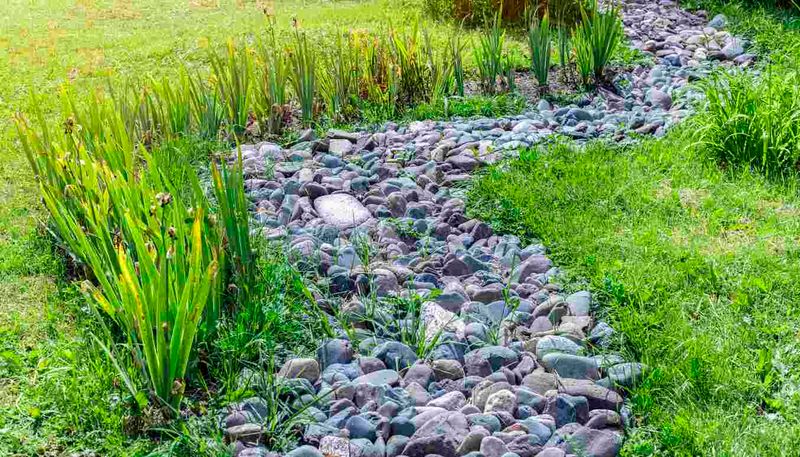
Smooth river rocks arranged between sturdy borders create a massage-like walking experience that connects you with nature. Various sizes and colors of tumbled stones form a textured surface that’s visually interesting and practical for drainage.
Metal, wood, or concrete edging keeps the rocks contained while defining the path clearly. This design works beautifully alongside water features, as the stones echo the feeling of a natural streambed.
While not ideal for areas that require snow shoveling, river rock paths excel in warmer climates or seasonal gardens. The spaces between rocks allow rainwater to percolate into the soil rather than running off, making this an environmentally friendly choice for eco-conscious gardeners.
12. Slate Slab Walkway
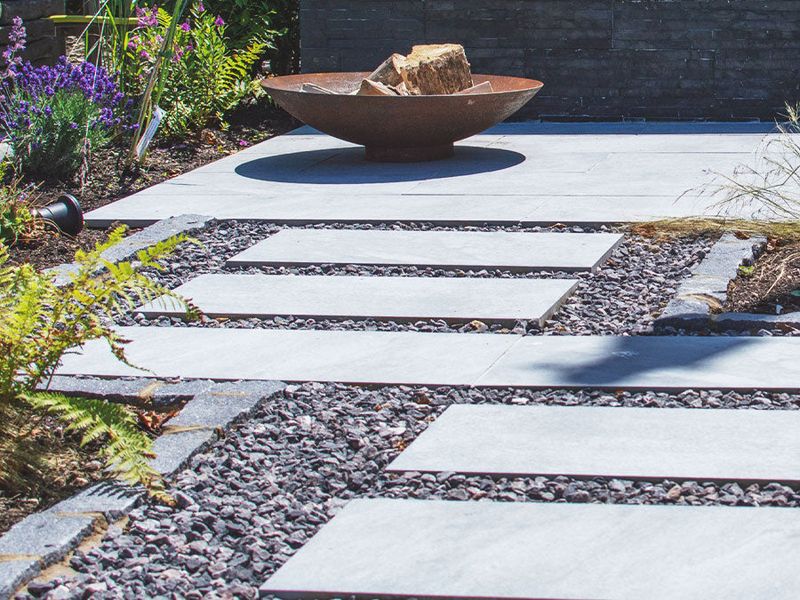
Dramatic slate slabs create a sophisticated path with rich color variation and natural texture. The deep blues, purples, and grays of slate complement both traditional and contemporary garden designs.
Unlike some stone options, slate provides a relatively flat walking surface while maintaining its natural character. The material’s density makes it extremely durable, standing up to decades of foot traffic and weather exposure.
Larger pieces require fewer joints, resulting in less opportunity for weeds to establish. Slate’s natural cleft provides excellent traction even when wet, making it a practical choice for rainy climates. This elegant stone works particularly well in formal gardens or as a statement approach to front entryways.
13. Checkerboard Grass Design
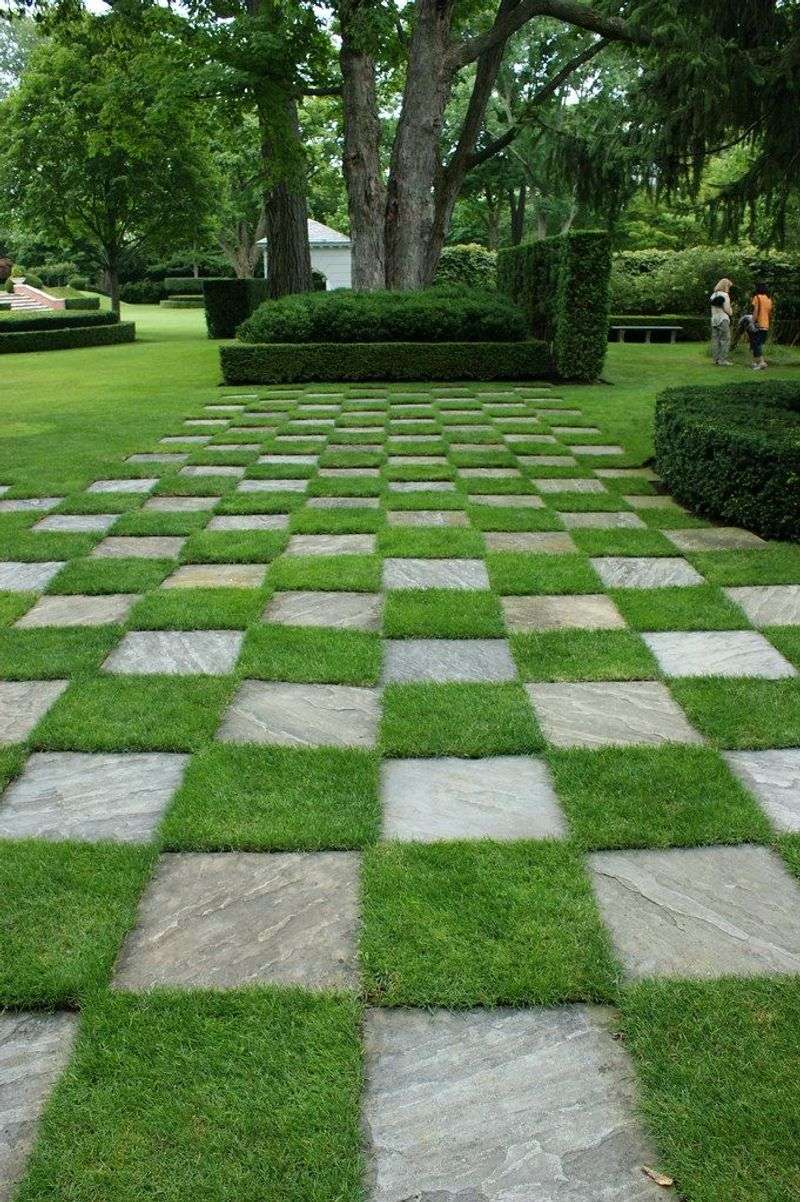
Alternating squares of pavers and grass create a playful checkerboard pattern that softens hardscaping with living green spaces. This design allows for significant grass coverage while still providing a solid walking surface.
The geometric precision of this pattern brings a touch of formality that works well in structured garden designs. Choose concrete pavers in a color that complements your home’s exterior, or try natural stone for a more organic feel.
Regular mowing keeps the grass sections neat, though you can also use low-growing groundcovers for a lower-maintenance alternative. This approach works best in full-sun areas where grass can thrive despite the competition from surrounding pavers.
14. Pallet Wood Path
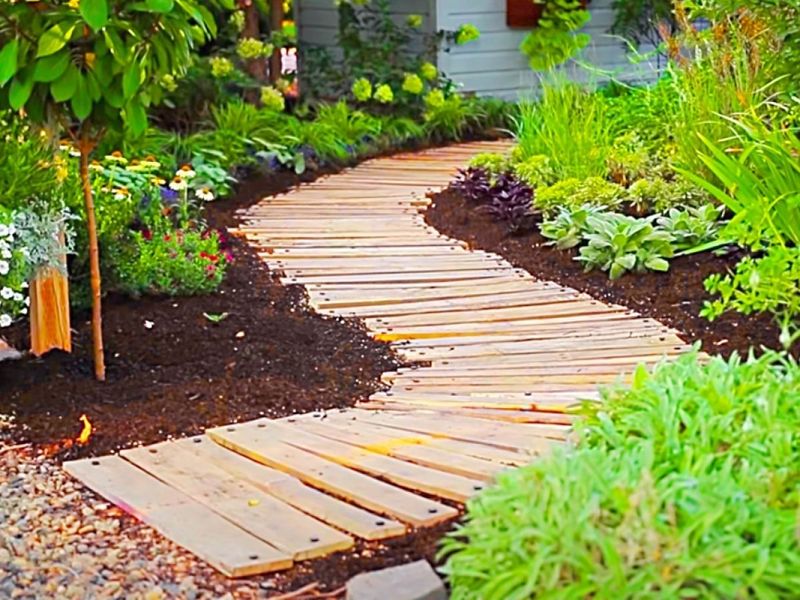
Upcycled wooden pallets transform into charming garden walkways with rustic appeal and eco-friendly credentials. Disassembled pallet boards can be arranged in various patterns herringbone, straight runs, or random arrangements all create different effects.
The weathered gray of aged pallet wood brings instant character, though you can stain or seal the wood for longevity and color control. Raising the path slightly off the ground using a gravel base improves drainage and reduces rot.
This budget-friendly option works wonderfully in cottage gardens, beach-themed yards, or any space where you want to add warmth and texture. The imperfections and history visible in reclaimed wood create a path with personality that manufactured materials simply can’t match.
15. Japanese-Style Zen Path
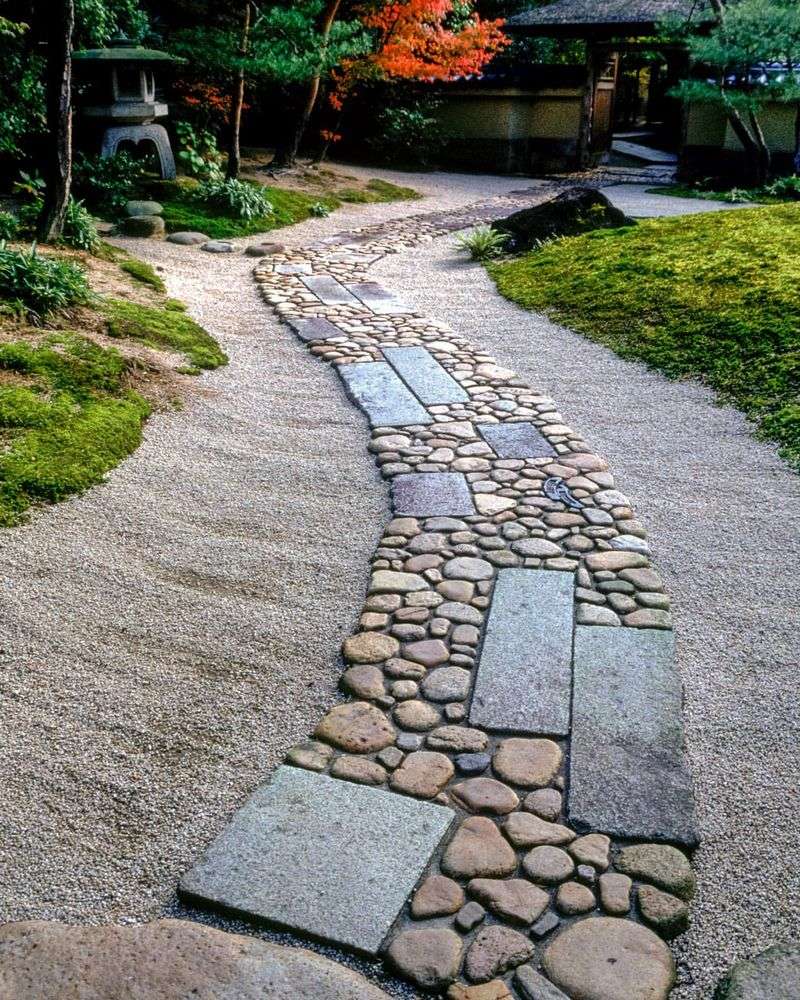
Inspired by traditional Japanese gardens, this minimalist path uses carefully placed stepping stones amid raked gravel to create a meditative walking experience. The stones appear to float on the sea of gravel, encouraging mindful steps and appreciation of the journey.
Natural materials like granite or basalt work beautifully in this application. The surrounding gravel is typically fine and light-colored, raked into patterns that represent water or energy flow.
This design requires minimal plant material, making it ideal for drought-prone areas or low-maintenance gardens. A Zen path creates a sense of tranquility and order that counterbalances busy lifestyles, turning a simple garden walk into a moment of peaceful reflection.
16. Cobblestone with Moss
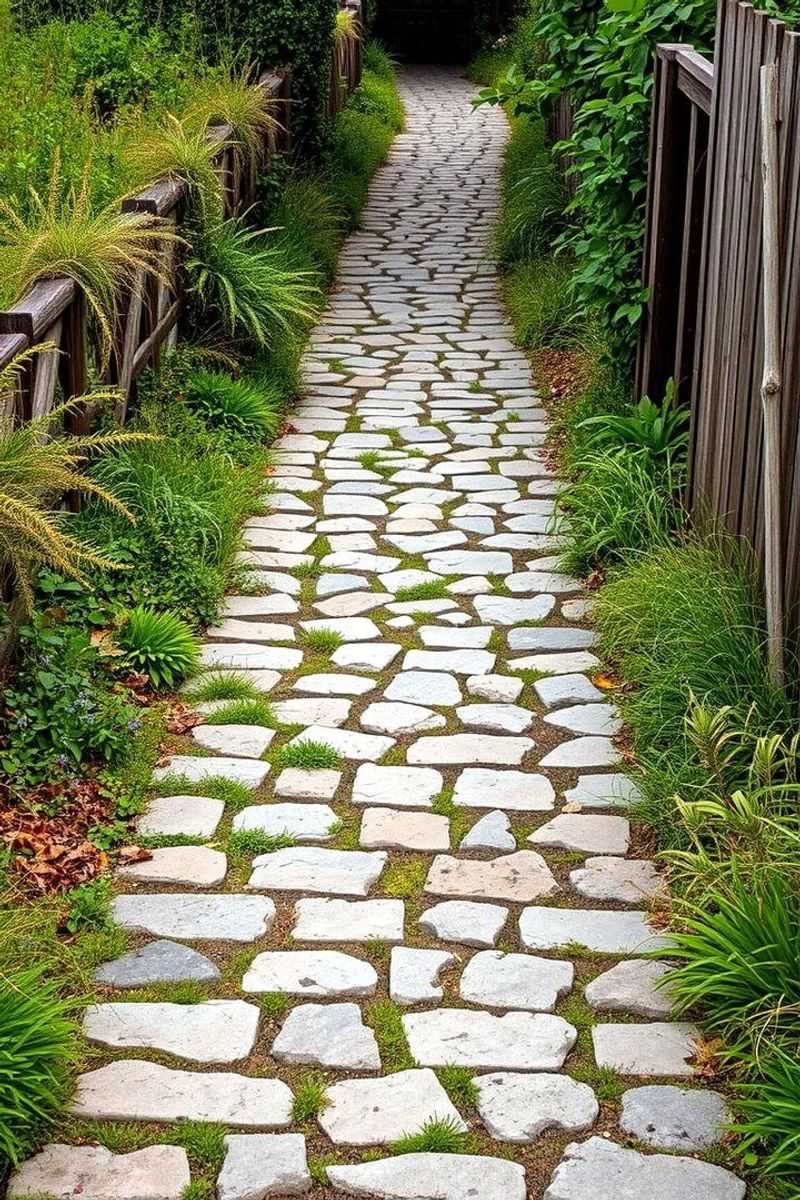
Old-world charm abounds in cobblestone paths where velvety moss fills the gaps between stones. This romantic design evokes European cottage gardens and woodland paths with its weathered appearance and soft texture contrasts.
The irregularity of cobblestones creates natural dips where moisture collects, providing perfect conditions for moss to establish and thrive. In shady, moist areas, the moss will spread naturally, though you can encourage growth by blending moss in a buttermilk solution and painting it between stones.
This pathway style works best in partial to full shade where the moss won’t dry out. The result is a magical, aged-looking path that seems to have been in place for centuries, perfect for cottage gardens or woodland-inspired landscapes.
17. Laser-Cut Metal Panels
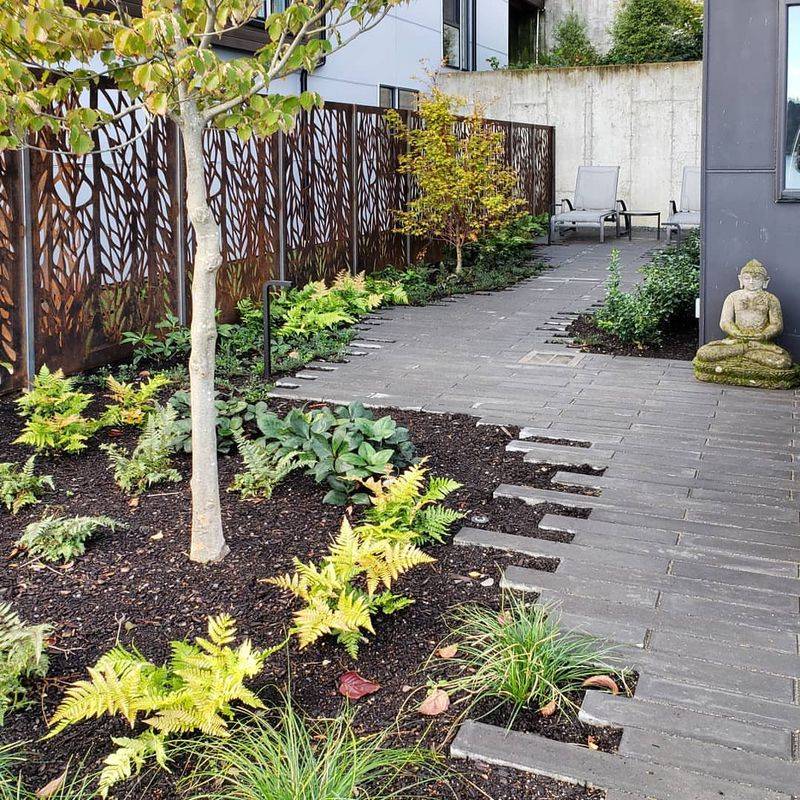
Ultramodern gardens shine with walkways made from laser-cut metal panels that cast intricate shadow patterns. These artistic pathways combine industrial materials with delicate designs for a truly unique garden feature.
Corten steel, which develops a stable rust patina, is particularly popular for its warm color and weather resistance. Patterns range from geometric abstracts to nature-inspired motifs like leaves, branches, or waves.
The panels can be installed over gravel, concrete, or even grass for different effects. At night, uplighting or strip lighting beneath the panels creates dramatic shadow play across your garden. This contemporary approach works best in minimalist landscapes where the artistic walkway becomes a focal point rather than competing with busy plantings.
18. Concrete Squares with Gaps
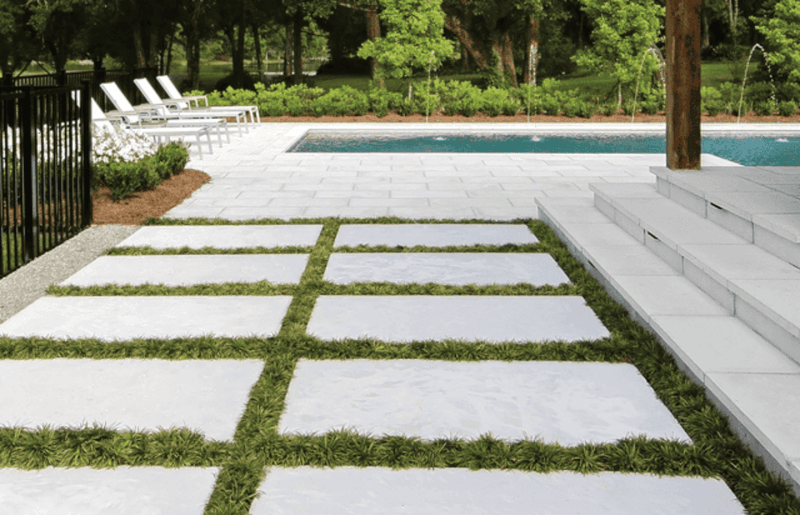
Modernist gardens benefit from the clean geometry of large square concrete pavers set with precise gaps between them. These gaps can be filled with gravel, grass, or groundcover plants to soften the industrial feel of the concrete.
The strong horizontal lines created by this design draw the eye forward and make small spaces appear larger. For added interest, vary the size of the squares or arrange them in an offset pattern rather than a straight grid.
This versatile approach works with many architectural styles, from mid-century modern to contemporary. The concrete squares can be poured in place or purchased as precast pavers, making this design accessible for both DIY enthusiasts and those hiring professionals.
19. Stamped Patterned Cement
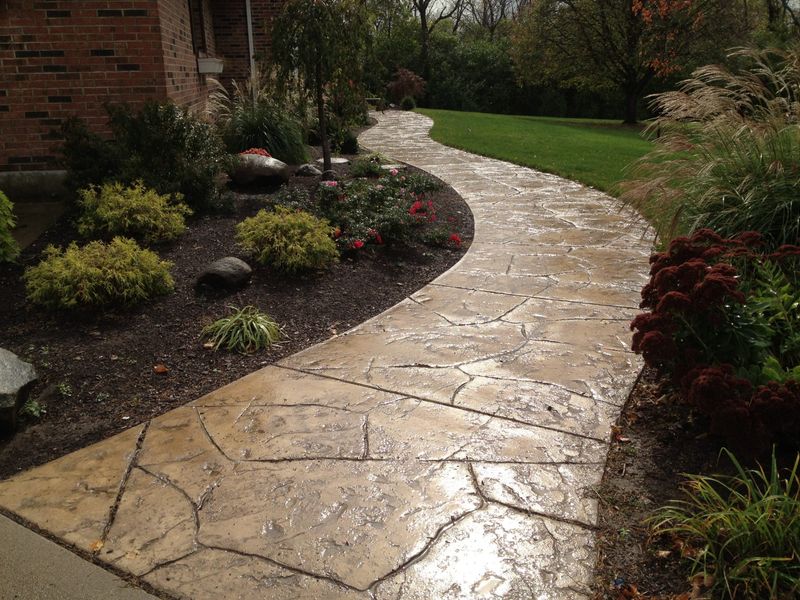
Stamped concrete offers the look of expensive materials like stone, brick, or tile at a fraction of the cost. Special molds press patterns into freshly poured concrete, creating realistic texture and dimension.
Color can be added during mixing or applied as a surface treatment, allowing for customized hues that complement your landscape. Popular patterns include slate, flagstone, cobblestone, and brick, though the options are nearly endless.
This durable surface requires minimal maintenance while providing a stable, level walking path. The continuous surface eliminates gaps where weeds might grow, making this an excellent low-maintenance option. For areas with freezing temperatures, proper installation with expansion joints prevents cracking during seasonal temperature changes.
20. Shell or Sand Walkway

Coastal gardens come alive with pathways made from crushed shells or fine sand. These materials bring beach vibes to your backyard while providing excellent drainage and a distinctive crunching sound underfoot.
White shells reflect sunlight, brightening shady areas and creating contrast against green plantings. For a cohesive coastal look, edge the path with driftwood, rope, or beach grasses.
While this style requires occasional replenishing as materials shift or wash away during heavy rains, the natural appearance and connection to seaside environments make it worth the maintenance. This pathway style works particularly well in casual, relaxed gardens where the informal edge transitions smoothly into surrounding plantings.
21. Terracotta Tile Trail

Warm terracotta tiles bring Mediterranean sunshine to garden pathways with their rich orange-red color and natural warmth. The earthy tones complement most plant materials and create a welcoming atmosphere in any garden style.
Traditional square or hexagonal tiles create formal patterns, while irregular broken pieces can be arranged in mosaic-like designs for artistic flair. The porous nature of terracotta means these paths may develop a patina of moss or lichen in shady, moist areas an effect many gardeners prize for its aged appearance.
This material works particularly well in Spanish, Italian, or Southwest-inspired landscapes. Sealing the tiles helps preserve their color and prevents frost damage in colder climates, ensuring your beautiful path lasts for many years.

